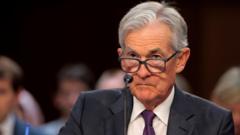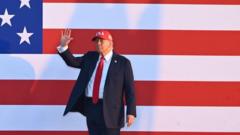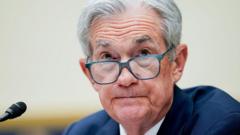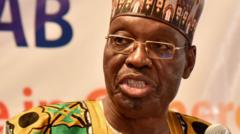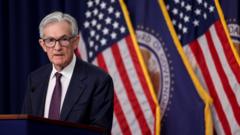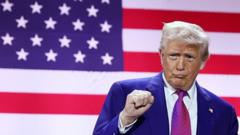The U.S. job market demonstrated slower growth last month with the addition of 143,000 jobs, yet the unemployment rate fell to 4%. Analysts remain optimistic despite the slowdown, but concern lingers regarding the implications of impending policy changes under the new administration.
U.S. Job Growth Slows, Yet Unemployment Remains Steady Amid Economic Uncertainty

U.S. Job Growth Slows, Yet Unemployment Remains Steady Amid Economic Uncertainty
A recent report indicates that job creation in the U.S. has slowed, but the unemployment rate has improved, raising questions about future economic policies.
US job growth showed a noticeable slowdown last month, with only 143,000 new jobs created, while the unemployment rate dipped to 4% from 4.1%, according to the latest report from the Labor Department. This development points to a steady, albeit more restrained economy, especially as U.S. President Donald Trump assumes office, set to enact major reforms that include cuts to government funding, mass deportations, and revise tariffs on imports. Such proposals are stirring uncertainty around the future trajectory of the U.S. economy.
Amidst these shifts, the U.S. central bank chose to maintain interest rates, marking a pause following a streak of cuts that began in September. Jerome Powell, Chairman of the Federal Reserve, noted a decrease in concerns regarding the job market, despite the tempered job growth last month. Analysts interpreted the report positively, indicating prior estimates of job gains in November and December had been revised upwards, providing a more robust view of the labor market.
According to Morgan Stanley's Ellen Zentner, the modest payroll growth seen in January mirrored an overcompensation by revised figures from the prior months, quelling fears of an upcoming recession. Gains in the health care and retail sectors were critical in maintaining the job market, despite challenging weather conditions impacting many regions.
The report noted a 4.1% increase in average hourly earnings from January 2023, though revisions indicated a lower overall job gain for 2024 than initially thought. Following the report, the U.S. stock market remained relatively stable, though opinions were divided at the White House. Spokeswoman Karoline Leavitt argued that the report showcased the Biden administration's shortcomings and highlighted the necessity for Trump's proposed policies aimed at economic growth.
Economist Samuel Tombs from Pantheon Macroeconomics expressed a more stable outlook for job trends, aligning with modern labor demands, yet still anticipated potential setbacks considering the uncertainty surrounding new economic strategies. The broader implications of this report signal a pivotal moment for the U.S. economy as it braces for transitions and adjusts to a new political landscape.







